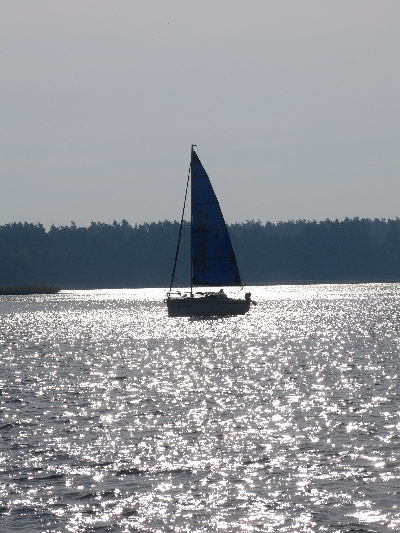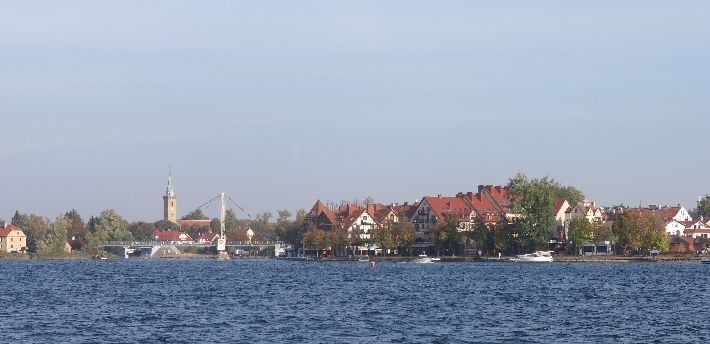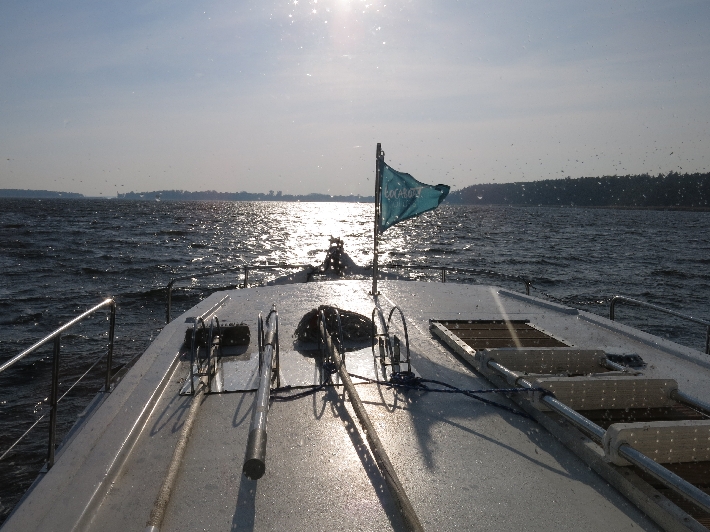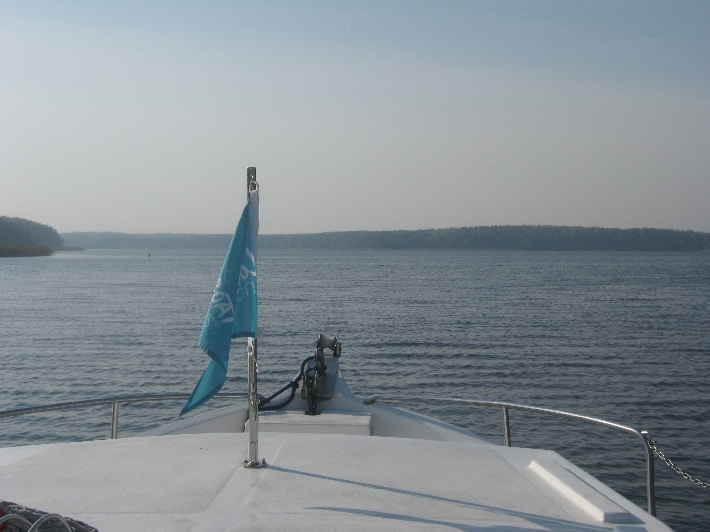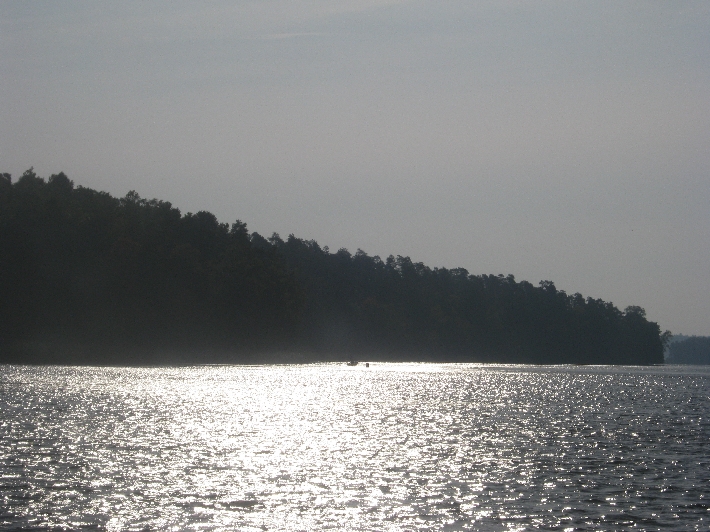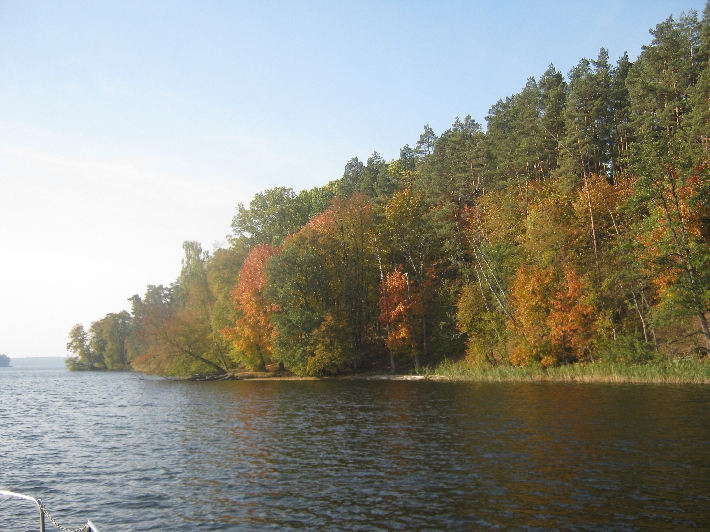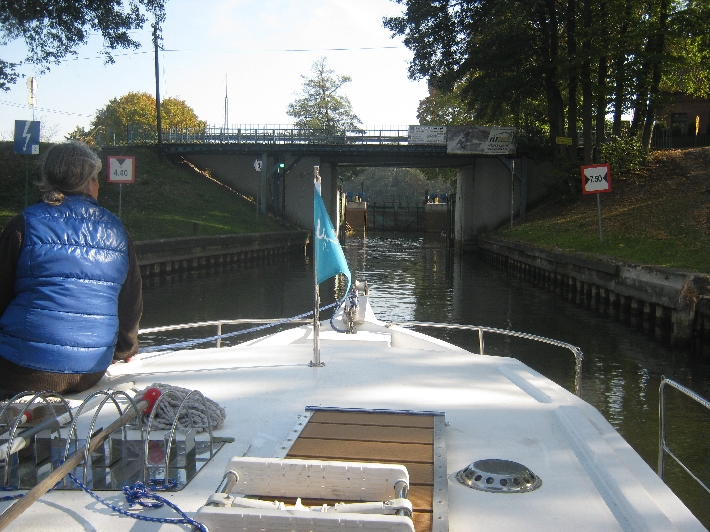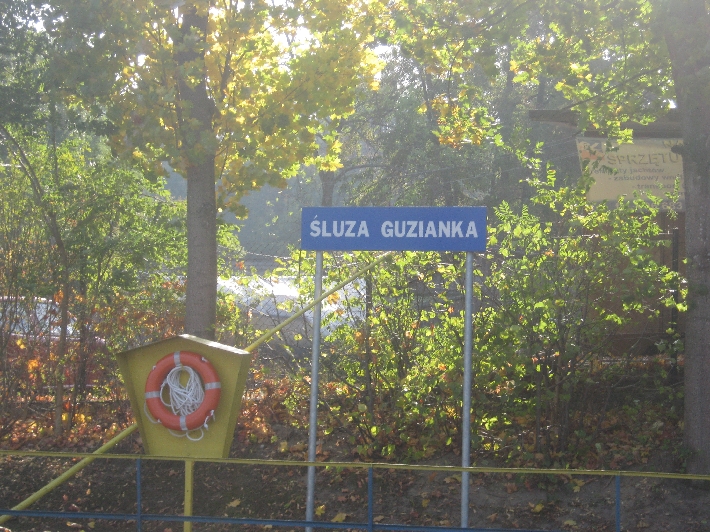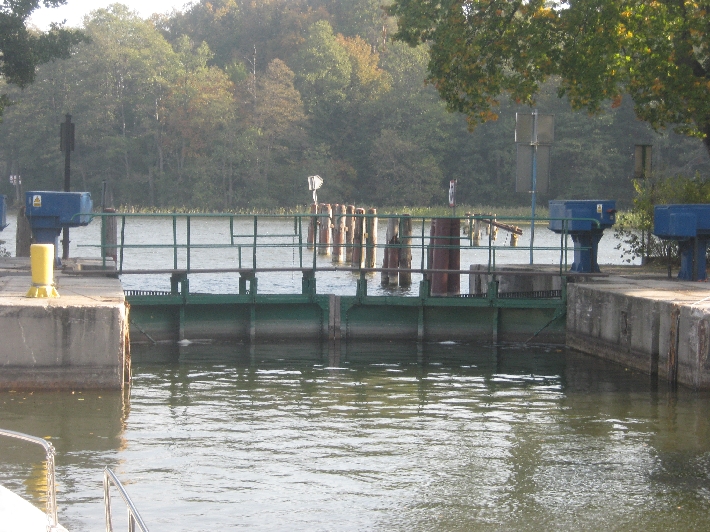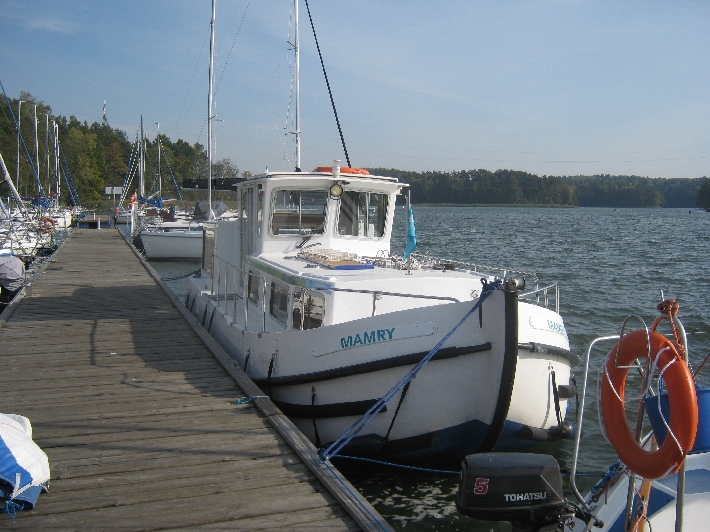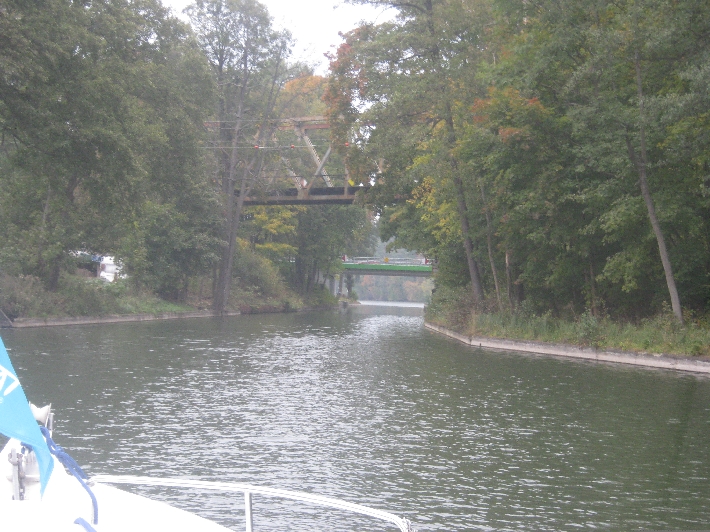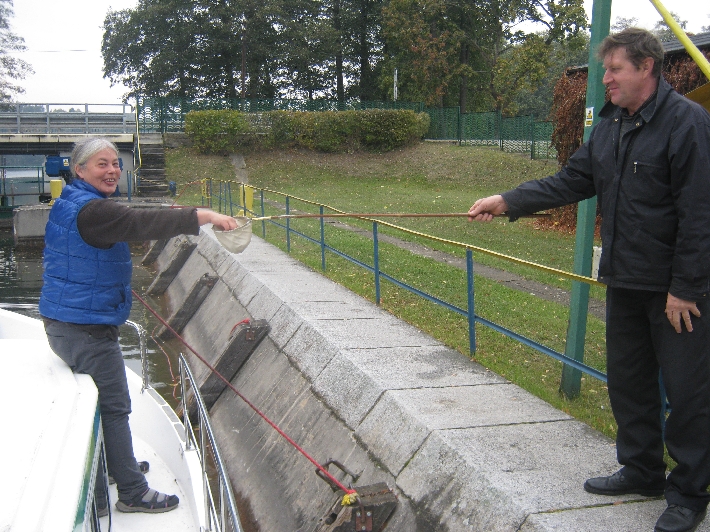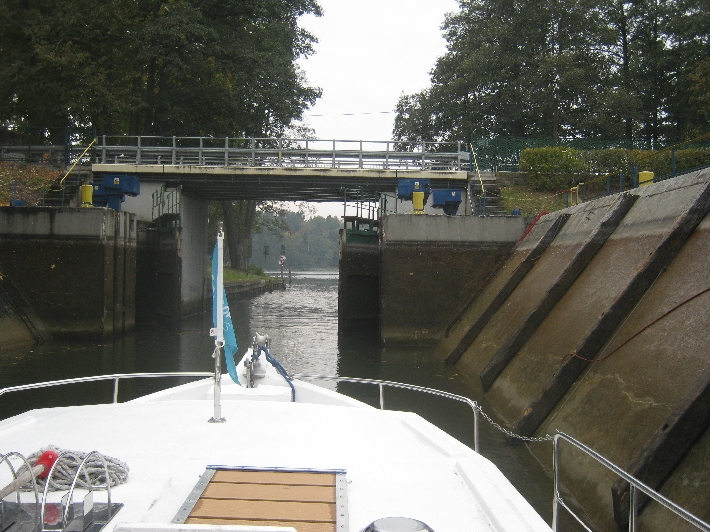
We left Malbork in the late morning of Sunday 18th October and, after crossing the Wisla/Vistula river, joined the major north-south motorway that comes from Gdansk and heads towards Warsaw. We then made speedy progress southwards, at the expense of a relatively modest toll. Having crossed the Wisla/Vistula river twice more, just south of Torun, we left the motorway and headed south-west to Poznan.
As well as booking us into a double room in the Tey Hostel, located right in the middle of the historic city centre of Poznan, Sybille had also downloaded a map to her tablet, to help us negotiate the narrow one-way streets and reach our destination. The advice of the hostel was to drive to the front door, unload, and pick up a parking permit for an off-street parking place, located a short distance away.
Unfortunately, when we reached Poznan, we discovered that several roads had either been changed to being one-way in the opposite direction, or were closed because of work to install underground cables, water pipes or sewers. We ended up getting completely lost and frustrated, despite thinking we had come well-prepared to find the hostel. After going around in circles for about forty-five minutes, Sybille spotted a ‘hostel’ sign.

We were actually in a spot where it was possible to at least temporarily park the car. So I stopped and Sybille ran off. I couldn’t drive any further forward because the road ahead was dug up and closed 🙁 When Sybille returned, around ten minutes later, she told me that the sign was for the wrong hostel, but she had found the right one, just around the corner. As it appeared safe to leave the ‘Carly’ where it was parked, at least for a short while, we unloaded all that we needed, and carried it to the hostel and put it in our room.
After this, I collected my parking permit from the hostel receptionist. She gave me a small map, on which she marked where the correct place was to park the ‘Carly’. ‘But which route do I take to get from where the ‘Carly’ is currently sitting, to the off street parking place?’, I asked. Even she wasn’t sure because of all the disruption caused by temporary road closures. But with a slight further deviation, her suggested route worked. Health warning – don’t try driving into the historic centre of Poznan if you want to maintain your sanity!
Despite these initial hassles, I very much enjoyed Poznan. Whilst it isn’t as grand as either Kraków or Wroclaw, it therefore means that it attracts far fewer tourists. Yet the central market square consists of a whole variety of attractive buildings, including the Town Hall above, which dates from the middle of the sixteenth century, and a row of arcaded buildings, adjoining the Town Hall, which you can see in the photograph below.


Unfortunately, within the main market square, there are examples of inappropriate Communist era architecture, no doubt replacing buildings destroyed during the Second World War. We were interested to see that in front of these relatively new buildings, there was a statue of Sv. Jan Nepomuk, a very famous Czech saint.
The exteriors of many of the buildings that surround the central market square, are highly decorated. It was difficult to choose which ones to post here. As in the Czech Republic, there is sometimes a stark contrast between the exquisite artwork on the buildings, and the use made of the ground floor premises, such as in the fourth example below. From our observations over the two weeks of our travels, kebabs seem to be a very popular takeaway food in Poland 🙂
 |
 |
 |
 |
To the east of the historic city centre, on an island created by two branches of the Warta river, stands Poznan Cathedral, dedicated to St Peter and St Paul. A Church has stood on this site for over a thousand years. It has been rebuilt and remodelled several times since, and has been more recently restored to its earlier Gothic form, after suffering damage during the Second World War.
 |
 |









